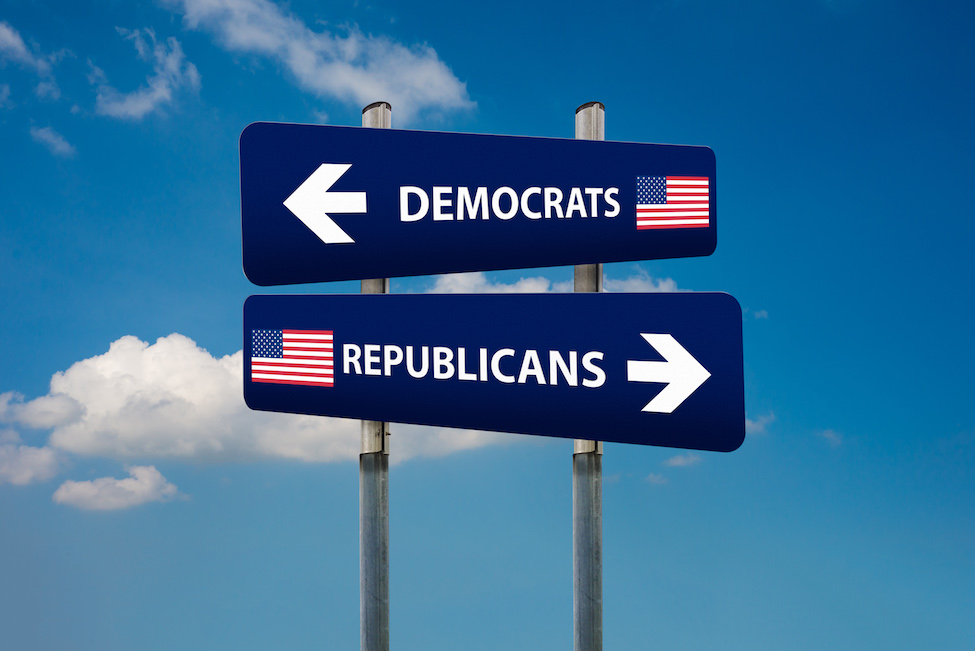FAU Poll Finds Trump Edging Out Clinton in Florida
Republican nominee Donald Trump leads Democrat Hillary Clinton in Florida 43 to 41 percent, with Libertarian Gary Johnson taking 8 percent, Green Party candidate Jill Stein 2 percent and 5 percent undecided.

The top issue for voters was dissatisfaction with government at 29 percent, followed by jobs at 18 percent; immigration at 13 percent; and ISIS at 12 percent.
Republican nominee Donald Trump leads Democrat Hillary Clinton in Florida 43 to 41 percent, with Libertarian Gary Johnson taking 8 percent, Green Party candidate Jill Stein 2 percent and 5 percent undecided, according to a new survey by the Florida Atlantic University Business and Economics Polling Initiative (FAU BEPI).
In the Florida race for the U.S. Senate, Democrat Patrick Murphy and Republican Marco Rubio lead by wide margins before their respective party primaries on Tuesday, Aug. 30, with Rubio leading Murphy 44 percent to 39 percent in a potential general election matchup in November.
For the presidential race, both candidates are underwater in terms of their favorability ratings in Florida. Trump scores a 41 percent favorable and 56 percent unfavorable rating, while Clinton has 40 percent favorable and 58 percent unfavorable rating. Clinton, meanwhile, has a loyalty score of 90 percent (those who have a favorable opinion and are voting for her), while Trump has a loyalty score of 94 percent. Trump leads among males 46 percent to 36 percent, but trails Clinton among women 45 percent to 41 percent. Independents are voting for Trump by a wide margin of 47 percent to 26 percent.
Clinton is beating Trump in three of the four age groups. She leads with 18 to 34 year olds by three points, 38 to 35 percent; 55- to 74-year-old voters 45 to 43 percent; while those over 75 provide her the strongest support at 60 to 34 percent. Trump leads among 35- to 54-year-old voters 53 to 30 percent.
Trump’s strongest regional support is in the western part of Florida where he leads 52 to 34 percent, and in the north at 47 to 32 percent. Trump also leads in the central region 44 to 36 percent. Clinton’s support is in South Florida, where she leads 57 to 30 percent.
The top issue for voters was dissatisfaction with government at 29 percent, followed by jobs at 18 percent; immigration at 13 percent; and ISIS at 12 percent.
The top quality for voters is experience at 27 percent; followed by Commander-in-Chief at 16 percent; trustworthiness at 15 percent; and focus on the economy at 14 percent. Wanting an outsider was mentioned by 12 percent of respondents.
Kevin Wagner, Ph.D., associate professor of political science at FAU and a research fellow of the Initiative, said that despite the national trend, the presidential race in Florida remains close and is within the survey’s margin of error.
“The fact that both Mr. Trump and Secretary Clinton are significantly upside down in their favorability ratings could make it difficult for either to move substantially ahead,” he said. “Clinton likely got a boost from the fact that Floridians chose experience as the top quality they are looking for in their presidential candidate. But, Floridians also chose dissatisfaction with government as their top issue, which likely favors Mr. Trump.”
The Florida poll was conducted Aug. 19-22. The polling sample was a random selection of registered voters. The Democratic primary consisted of 364 registered Democrat likely primary voters with a margin of error of +/-5.1 percent at a 95 percent confidence level. The Republican primary consisted of 327 registered Republican likely primary voters with a margin of error of +/-5.4 percent at a 95 percent confidence level. The General election poll consisted of 1,200 registered likely voters with a margin of error of +/-2.7 percent at a 95 percent confidence level.
For more information, contact Monica Escaleras, Ph.D., director of the BEPI, at 561-297-1312 or BEPI@fau.edu, or visit www.business.fau.edu/bepi.
-FAU-
Tags: students | business | faculty and staff